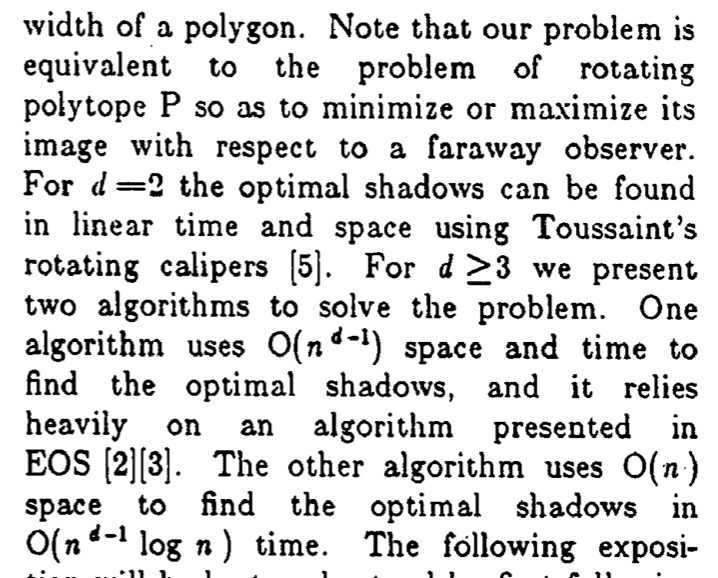We add a bit more on shadows and planar sections following On a pair of solids with both corresponding maximal planar sections and shadows having equal area . We consider only polyhedrons.
- Given a convex polyhedral solid, how does one find its largest planar section? 'largest' could mean max area or max perimeter. So, this is 2 questions in 1.
If one could prove that either or both largest planar sections necessarily pass through 2 vertices (say), that could be useful.
- To find an algorithm that finds the largest shadow of a given convex polyhedral solid (again area and perimeter versions).
Again, if one could prove some 'lemma' regarding vertices of the polyhedron, it could be nice.

